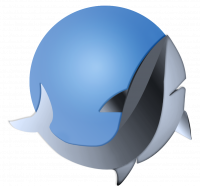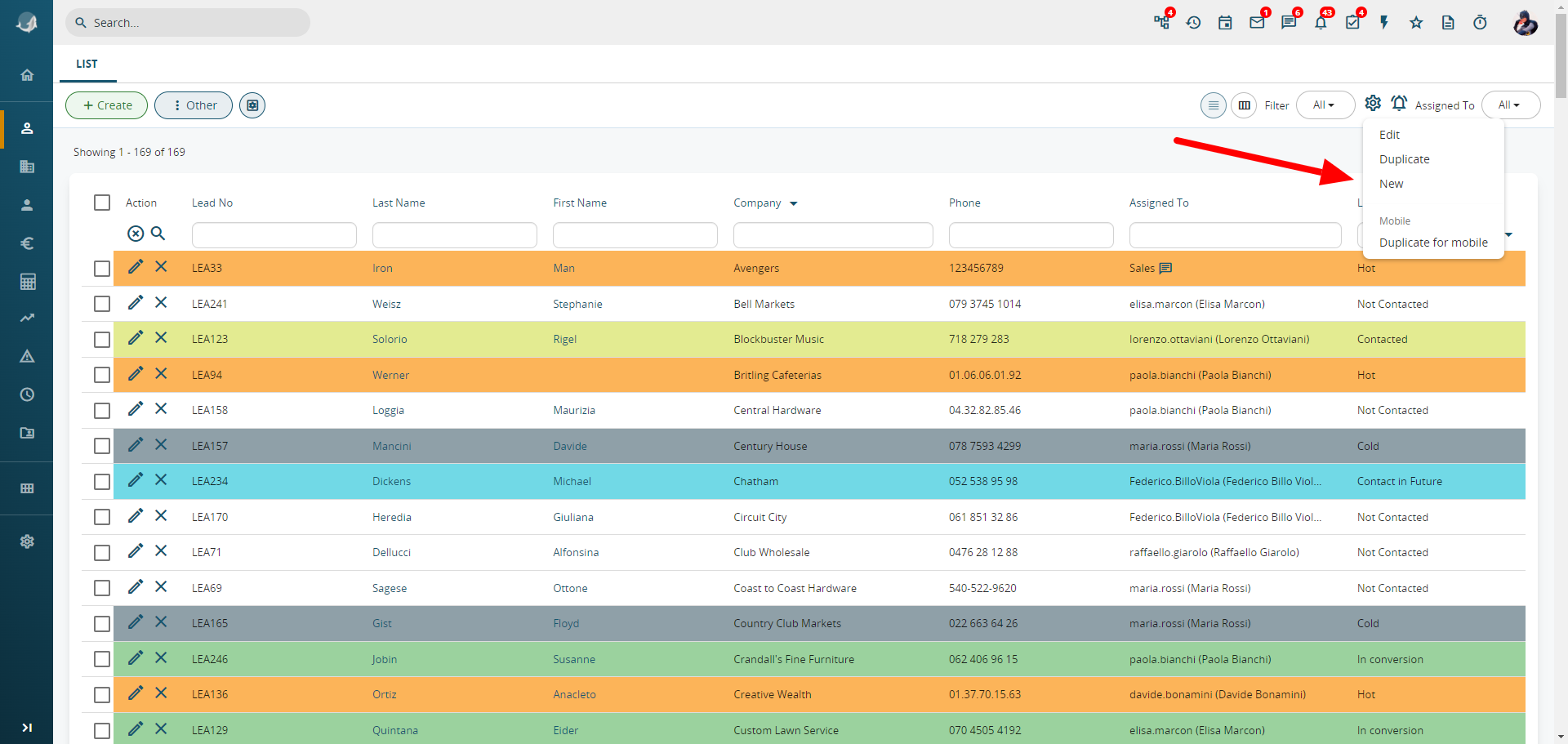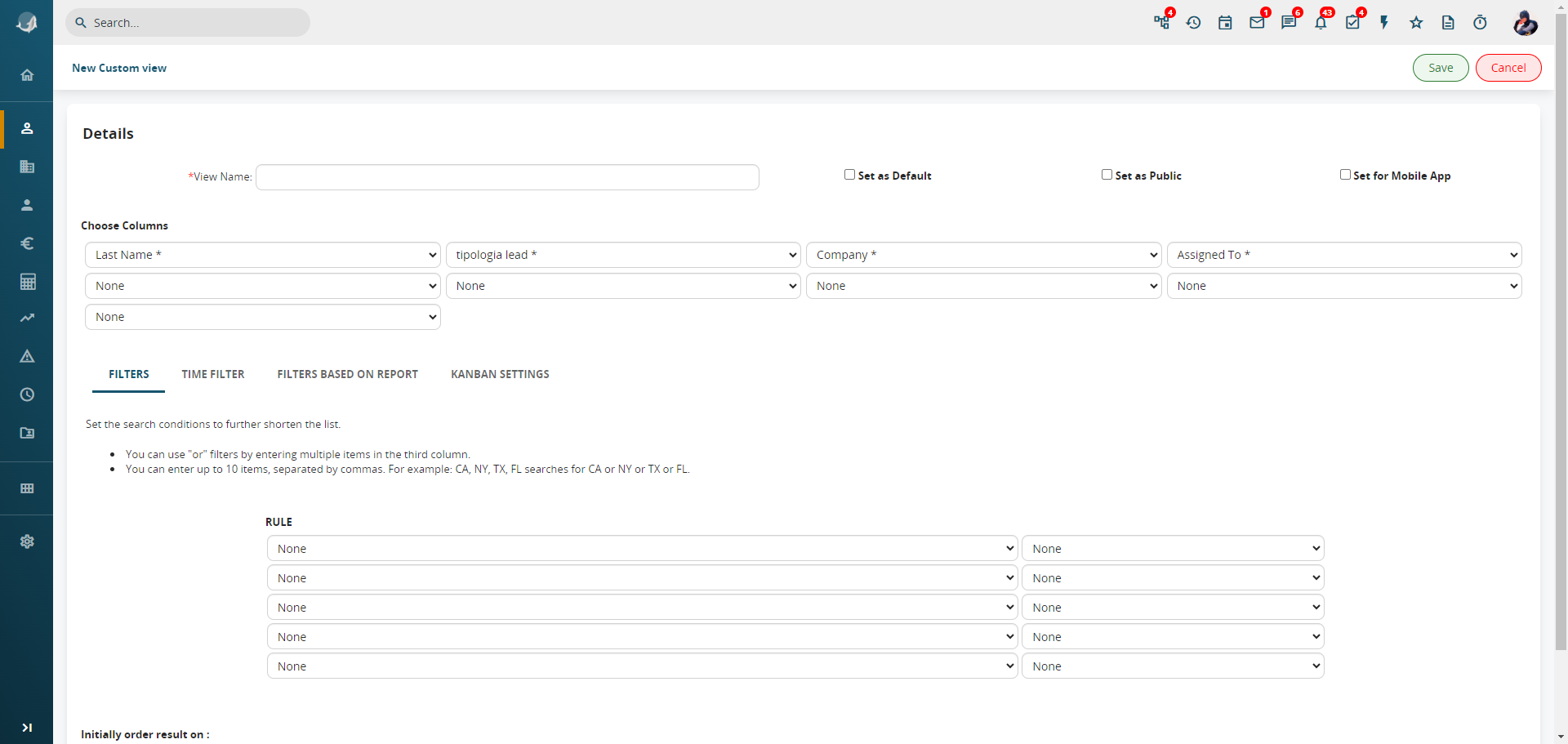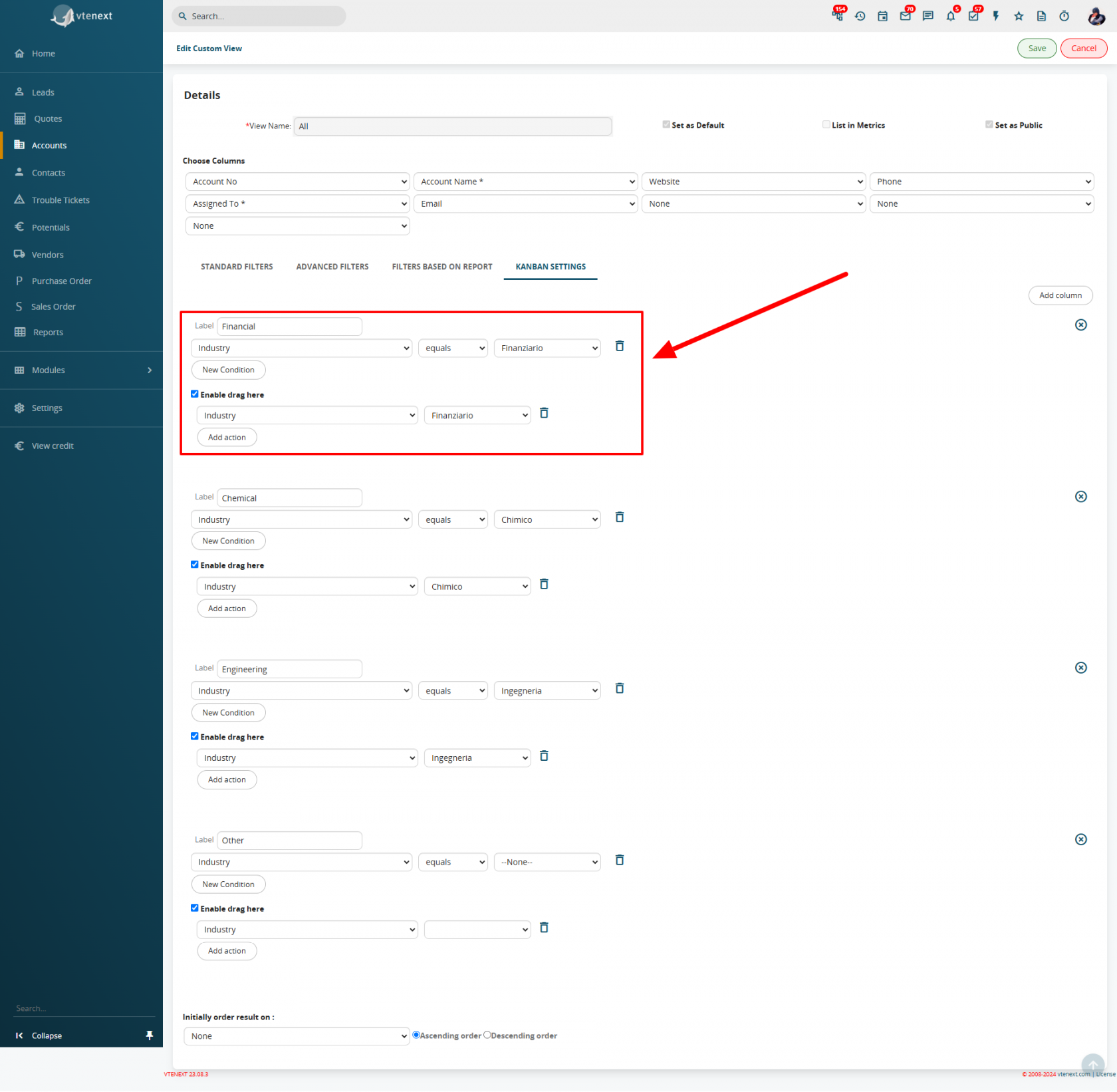2.6.1 How to create a Filter (standard filters, advanced filters, filters based on report, kanban)
The following section explains how to create a customised filter starting from a list of accounts. This procedure can be applied to all the other modules.
Configuration parameters:
- columns content (filter fields displayed)
- any time interval in which the data were created or changed
- search operators including “and”, “or”, “contains”, “does not contain” etc.
To create a new filter, click on NEW from the cogwheel icon alongside the Filter.
From this screen you can create your customised list.
|
Set as Default |
If you want to apply the filter automatically every time you open the module |
|
Set as public |
Option to make the filter public. It must be previously agreed by an admin user in order to be displayed and used by all the other users. |
|
Set for Mobile App |
Select this option if you want to make that filter available on the Wilson Mobile App as well |
N.B. The public filter must be approved in advance by an user with the right of Administrator so that it can be visualized and be used by all users.
Standard Filters
|
Select Column |
Select a Date type field to make a time selection. |
|
Select duration |
It allows to set a customized or pre-estabilished time frame related to the field you’ve chosen in “Select" |
|
Starting/ Ending date |
They are automatically set through the option “Select duration”, except for the personalized option |
|
Order initially for |
It allows organize the data in ascending or discending order. |
In the Advanced Filters section you can define certain selection criteria that are not based on the timeline (all other fields: drop-down menu, free text, number, etc.).
Caution: The “equals” and “contains” operators differ as follows:
EQUALS: performs a character by character check. The field value must be exactly the same as the term of comparison contained in the filter, including upper case and lower case letters.
CONTAINS: this is a less restrictive check than “equals”, where the field value must contain the text string specified in the term of comparison.
Example: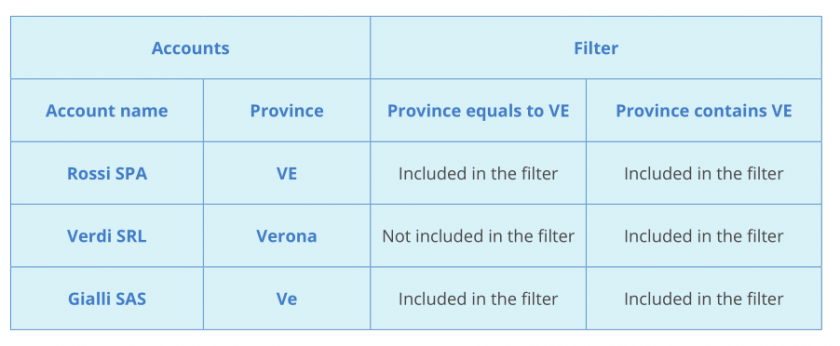 In the Filters Based on Reports section you can extend the filter functions by means of a Report (for use of the Report module refer to section 13.1):
In the Filters Based on Reports section you can extend the filter functions by means of a Report (for use of the Report module refer to section 13.1):
By means of this setting you can link to the filter the conditions set and columns selected previously in the Report.
Finally, in the "Kanban Configuration" tab, you can set up a column view that allows sorting by a chosen variable (typically a dropdown menu) and drag and drop a record from one value to another.
For example, if you want to view companies by the "industry" field in Kanban mode, this configuration is required. When creating or editing a filter, click on "Kanban Configuration" and then on the "Add Column" button on the right.
You can then begin the configuration by adding a column for each item you want to group. In this example, the "Industry" field in the "Companies" module has been chosen, and the configuration is as follows:
|
Label |
This is used to give a name to the column header (e.g., "Financial Sector") |
|
Condition
|
This step determines which records will be displayed in that column based on a condition (e.g., the "Sector" field is EQUAL to "Financial") |
|
Enable drag here |
This option enables the "drag here" functionality, allowing records to be moved into that specific Kanban column |
|
Action |
This option allows the configuration following the "drag here" action, meaning that when a record is moved into that column, the value of the dropdown field (in our example, the "sector" field) will change from one value (X) to the value selected for the column (in this case, Financial |
